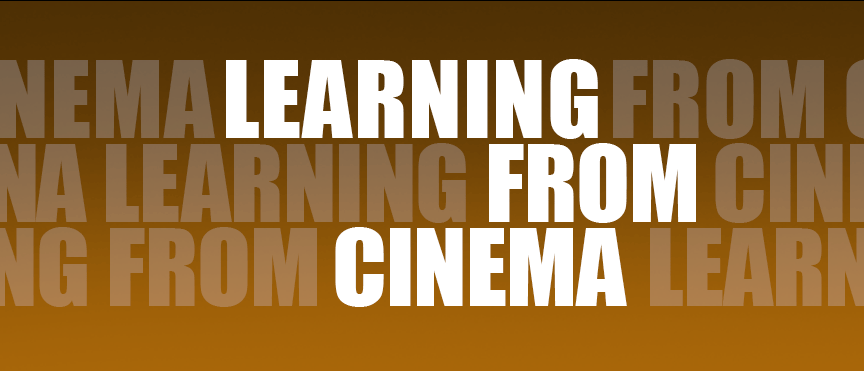
IN THE MEDIA

Learning from Cinema
WRITTEN & PHOTOGRAPHED BY: STEVE HOLLOWAY
The visual landscape of America used to be defined by magazines. Today, it’s movies.
So I watch movies. A lot of movies (some movies over and over) and follow directors and cinematographers.
My reading list includes On Directing Film by Director/Screen Writer, David Mamet. And my podcast library includes interviews with cinematographer Greg Fraser (Dune, The Batman, Mandalorian), cinematographer Roger Deakins (Skyfall, Sicario) and script and continuity collaborator James Deakins (Sicario).
Here are some ideas borrowed from cinema.
Be Story Driven
How do cinematographers choose projects? Do they look for action films? Or films shot with multiple cameras or certain points of view? Or big budget films? No. It’s story. They look for stories that interest them. Stories they want to tell.
Let stories that interest you, stories you want to tell, choose what you shoot
It’s an idea that, more than anything else, will motivate you get out there and start shooting, to tell a story, to learn how to tell a story or to do a better job of telling a story.

In On Directing Film, Mamet writes that directors must answer the question: “what’s the scene about?” In other words, you have to decide how you will tell the story.
The Theory of Montage
Mamet describes how Eisenstein suggested a movie should be made. Instead of the obvious, following a protagonist around making a record of what the protagonist did, Eisenstein’s theory of montage uses a succession of images juxtaposed so that the contrast between the images moves the story forward in the mind of the audience.
For example, watch the first eleven and a half minutes of The Batman from the opening scene to the end of the subway scene. There are a 104 juxtaposed shots. 104 shots in eleven and a half minutes! That’s just a little over six seconds for each cut. Watch them to see how to move a story forward.

The Homepage GIF for Shot on iPhone Toolbox is an example of still images juxtaposed to tell the Toolbox story. 16 images in 12 seconds.
“I Wish I had a Shot of This”
Mamet writes about the director in the editing room saying “I wish I had a shot of this” and “I wish I had a shot of that” to tell a story. Then makes the point that while you’re on location you can shoot anything you want.
Think about what you need WHILE you’re shooting
Think of all the shots you need (or might need) to tell your story. Wide shot. Medium shot. Second point of view. Tight shots. Blurred shot. Details. Reflections. Shadows.
Mamet is talking about film but his approach translates directly to still images. I use it almost every time I shoot.
Thinking and Working Faster
Studio photographers, especially still life photographers, can be obsessive about an image, taking hours and, sometimes, days to set up a shot.
Cinematographers often have only 15 minutes or 30 minutes to set up and light a shot then shoot it and move on. If they can’t do that, they won’t get all the shots they need to make their day.
Even with that pressure to deliver, they get extraordinary shots.
Practice thinking and working faster when you shoot. Make a set of decisions, where to put the camera, what to focus on, where to shoot in relation to the light, then shoot. Change what doesn’t work and shoot again. REALLY LOOK at what you’re shooting. Make decisions based on what works. Trust your instincts. Consciously work faster. Do that again and again and again and you’ll learn to get the result you’re looking for every time.

The shot sequence for Three Apples with Plate and Platter are examples of learning to work faster and thinking of the shots I might need to tell a story. I started near eyelevel first in a tight cropping then changed the arrangement and went to a medium crop. I finally moved to overhead at a wider crop for the shot I used in the final image (below). 3 setups. 14 shots. All in 6 minutes total including gathering props.

Three Apples with Plate and Platter color corrected and graded.
Can an Image be too Pretty?
Yes. It’s easy to be “seduced” by something because it’s visually beautiful. Some groups of images can be too pretty. Silhouettes are stunning but three silhouettes in a row to tell a story is weaker than a single silhouette and two other views. The right image is the image that drives the story forward.
Your Projects Need to Feed You Creatively
When you think about projects, think of ways to feed yourself creatively. Use that idea to pick who, what and how you shoot. Are you excited about a new technique? Shoot that. A new way to tell a story? Shoot that. Someone you’re close to. Shoot them. A subject you love to look at? Shoot that. A person you find interesting? Shoot them. Or a place you love to visit? Shoot that.
How has Technology Changed the Job of a Photographer?
Digital capture has given us control over our images we couldn’t have imagined twenty five years ago.
On location, we know what the light is doing in real time and that we’ve got a good exposure and good focus before we walk away from a set up.
In post production, we edit, color correct and color grade an image, delivering the result we visualized while we were shooting.
A word of caution, technology can consume us to the point that we obsess about it.
Don’t.
Just like any lens or light, technology is a tool. Just a tool. Only use it to drive the story you want to tell forward.



QUICK READ: DETAILS

Using Details to Tell A Story
Details help move a story line along. This palm tree wall sconce was captured in the lobby of The Lighthouse Inn, Rockport, Texas. The graphic light fixture image, taken on the way to dinner, visually ties the location to the image.
Post Production included onboard brightness and contract adjustments and offloading for background, color, density and perspective adjustment.
Captured on an iPhone 11 Pro Max with Beastgrip and Bluetooth shutter release in natural light.


- Shot on iPhone Toolbox [ Homepage ]
- Two Essential Skills [ Change How You Shoot ]
- Two iPhone Features People Take for Granted
- Toolbox How To Guides [ 27 Deep Dive Guides ]
- Translate your Skill Set into a Working Process
- IDEA FILE Shot on iPhone Gallery One
- IDEA FILE Road Portraits One
- IDEA FILE Road Portraits Two
- Digital Evolution
- From The Batman to Shooting on iPhone
- Making the Case For Shooting on iPhone
- Camera and Light Kit Ideas
- Copied on iPhone
- The Power of One Idea
- Becoming Proficient in Post Production
- Designing with Type
- Learning From Cinema
- How the Three Lenses on iPhone Work
- Here are My Influences [ Who are Yours? ]
- Steve Holloway [ Photographs ] Pre iPhone
- Steve Holloway [ Memoirs ]


